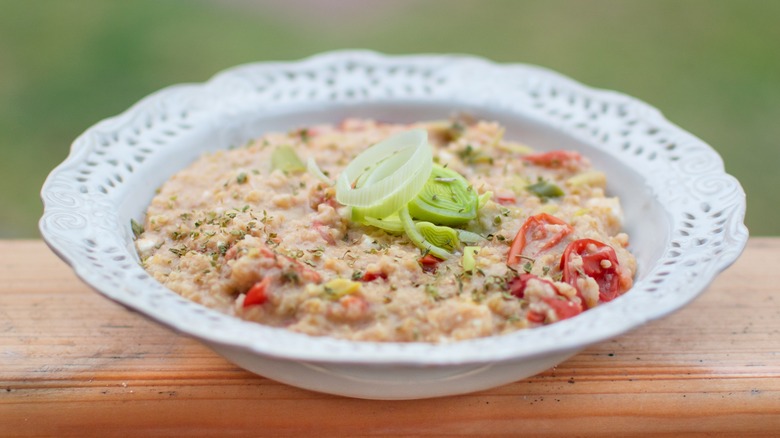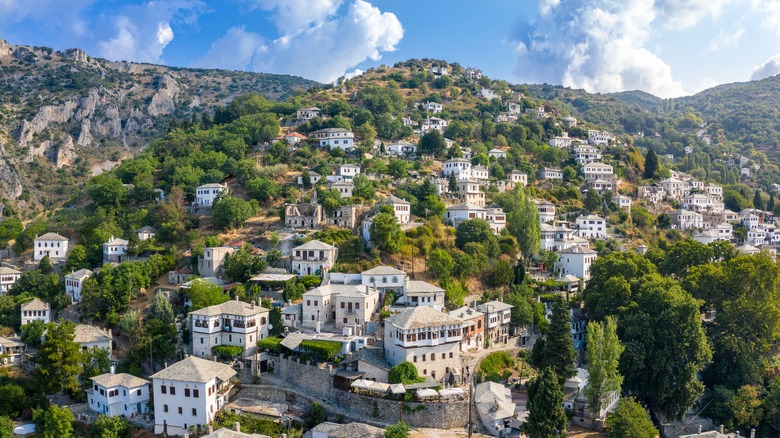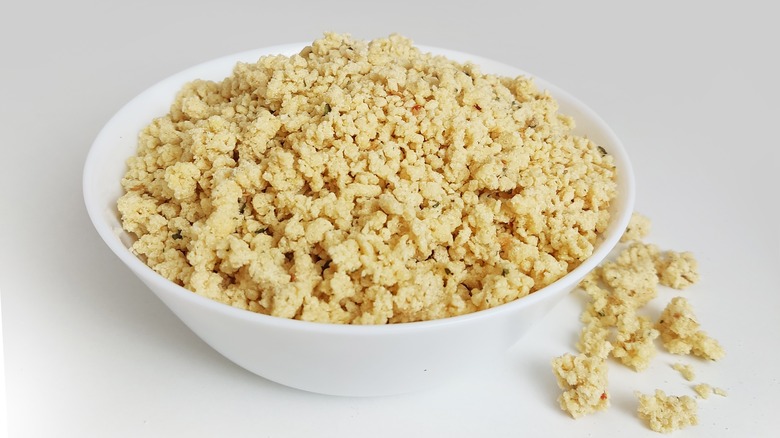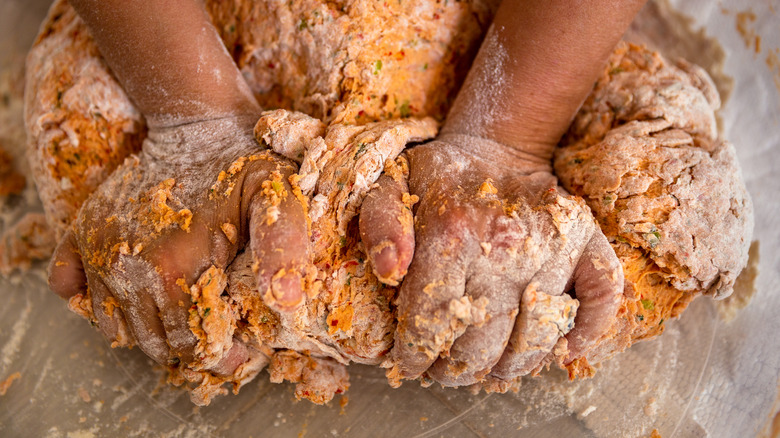Trahana: Greece's Creamy, Comforting Pasta Dish
You may have thought Italy was the pasta capital of the world, but, it turns out, Greece also has some traditional pasta dishes that are worth hopping on the next red eye for. From Chylopites, long-cut or short square-cut noodles made from milk and eggs; to pastitsio, Greece's own version of lasagna; to kritharaki, the Greek variety of orzo are a few examples of the hearty and creamy pasta dishes waiting to be enjoyed in the country.
However, when it comes to trying one of the oldest and one of the most versatile meals in Greece, trahana is sure to hit the spot. Trahana, also spelled trachanas, is a traditional pasta made into a small, gravel-like grain product rather than prepared as long or short noodles. It's thought that trahana is often best enjoyed in the dead of winter, as this warming meal is both filling and comforting. The tiny pasta is often made with sour milk and flour, giving it a tanginess that pairs perfectly with the peninsular nation's favorite cheese, feta. There's no shortage of ways to prepare trahana as a meal, as their size and shape are often perfect for making soups or porridges.
While this tasty meal has since grown to gourmet stardom, it has much more humble origins in providing cheap and essential nutrients to generations of Greeks.
History of trahana
Like many traditional dishes that date back centuries, the exact origins aren't known. However, there is evidence that this dish goes as far back as the year 100.
It's known that Apicius, an ancient collection of Roman and Greek recipes that dates back to the early part of the first century AD, describes a meal referred to as "tracta." This dish was a thick porridge, and many believe this is where the roots of modern trahana lie. Others believe that the dish's name shows insight into the pasta's geographical roots or that it is formed from the Greek word for crispy, τραγανό.
It's known that trahanas have had a significant impact on many generations of Greeks, having once been a symbol of humble living. It was simply a nutritious meal that anyone could make, regardless of their current financial or the nation's political situation. It was particularly useful to make during war and other difficult times.
However, today, it is beloved by many regardless of societal status, and one can find elevated versions of the once poor-man's-food across the globe.
Ingredients in trahana
While it is clear that the exact historical origins of this dish are unknown, it is believed that ancient agrarian people created the dish to utilize milk that would soon spoil, allowing them to preserve the dairy and have reliable food throughout the winter months.
The traditional dairy-based trahana often comes in two different ways. One version is sweet and the other is sour, depending on whether it was made with whole or fermented milk. Goat's milk is typically the dairy milk of choice, as it is plentiful in the Greek countryside.
The pasta typically contains semolina or flour along with the milk or yogurt of choice. It's not uncommon for certain ingredients, such as spices or vegetables to be mixed directly into the dough. The ingredients added for flavor vary greatly, and it often depends on what region of Greece you're in.
How trahana is made and eaten
When creating homemade trahana, it is made similarly to other pasta noodles. First, the flour gets combined with the fermented dairy and other ingredients. The mixture gets cooked, kneaded (sometimes with vegetables or spices), and then dried. During the drying process, the mixture is pressed flat to cover a larger surface area. This helps it dry out faster. Finally, when it's ready, it is broken apart and crumbled into small pebble-like pieces. The pasta can then be stored for several months.
Even though trahana is often enjoyed as a warm meal on chilly nights, the pasta itself is often made toward the end of the summer months. One reason for this is that there's often a surplus of milk in the countryside during this time of year. Also, during the hot months, the cool summer breeze works great for naturally drying out the small grains of pasta.
Trahana is cooked differently just about anywhere you go in Greece. Sometimes it's simply boiled with water or a salty stock. Various spices, sauces, meats, and other accouterments are also often added to taste. In the rural and rugged region of Epirus, The Greece National Tourism Organization notes that mushrooms are a staple mixed into the trahana dough itself. The island of Crete mixes snails into their comforting version of trahana. Sunny Cyprus prefers to pair theirs with halloumi.
However this salty, tangy, and nutritious dish gets prepared, you're likely to find yourself enjoying it.



